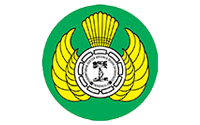Anticipatory Balance in Athletes Cerebral Palsy After 6-Month Intervention of Proprioceptive Neuromuscular Facilitation Stretching Techniques
Downloads
Background: The effect of Proprioceptive Neuromuscular Facilitation (PNF) stretching, in addition to standard stretching, improves anticipatory balance in athletes with Cerebral Palsy (CP). We aimed to analyze the effects of PNF stretching to standard training over 4 weeks on anticipatory balance in Cerebral Palsy athletes at 6-month post-intervention evaluation.
Methods: The subjects of this study are 24 athletes with Cerebral Palsy at the Indonesian National Paralympic Committee (NPC) training facility. Subjects divided into the treatment group (n = 12) received standard stretching exercises along with PNF stretching, and the control group (n = 12) performed only standard stretching exercises. Both groups received intervention 3 times per week for 4 weeks and evaluation 6 months post-intervention. Y balance tests (YBT) were measured in three directions: anterior (A), posterolateral (PL), and posteromedial (PM), pre- and post-intervention.
Results: There was significant improvement of YBT in the treatment group after 4 weeks of intervention. For the right and left limbs, marked increases were observed in all directions (p < 0.05). No significant improvements in YBT were observed at 6 months post-intervention in all directions (p > 0.05).
Conclusions: Significant improvements in the Y Balance Test were observed after 4 weeks, but no differences between the two groups at the 6-month evaluation. These findings suggest that while short-term gains in dynamic stability are achievable with PNF, sustained benefits require ongoing reinforcement to maintain neuromuscular adaptations over time.
Runciman P and Derman, W. The athlete with cerebral palsy: Challenges for the team physician. Aspetar Sport Med J. 2018;7:142–7.
Hrysomallis C, McLaughlin P, Goodman C. Balance and injury in elite Australian footballers. Int J Sports Med. 2007;28(10):844–7.
Rabbani AH, van de Panne M, Kry PG. Anticipatory balance control. In: Motion in Games. MIG '14: Proceedings of the 7th International Conference on Motion in Games; 2014 Nov 9-11; Newcastle upon Tyne, UK. p. 71–6.
Nelson S, Wilson CS, Becker J. Kinematic and kinetic predictors of Y-balance test performance. Int J Sports Phys Ther. 2021;16(2):371.
Gasibat Q, Simbak NB, Aziz A. Stretching exercises to prevent work-related musculoskeletal disorders: A review article. Am J Sports Sci Med. 2017;5(2):27–37.
Krishna KR, Thakur A, Priya PR, HS S, Srivastav S, Prabhu S. Effect of PNF in improving lower extremity function in adolescent with spastic diplegic cerebral palsy-A case report. Indian J Public Health Res Dev. 2020;11(7):406–8.
Gonell AC, Romero JAP, Soler LM. Relationship between the Y balance test scores and soft tissue injury incidence in a soccer team. Int J Sports Phys Ther. 2015;10(7):955-66.
Neves LF, de Souza CQ, Stoffel M, Picasso CLM. The Y balance test–how and why to do it. Int Phys Med Rehab J. 2017;2(4):99–100.
Yildiz M and Mehmet Ç. Acute Effect of Proprioceptive Neuromuscular Facilitation-Based Warm-Up on Isokinetic Strength, Endurance and Balance. 2024.
Zaidi S, Ahamad A, Fatima A, Ahmad I, Malhotra D, Al Muslem WH, et al. Abdulaziz S, Nuhmani S. Immediate and Long-Term Effectiveness of Proprioceptive Neuromuscular Facilitation and Static Stretching on Joint Range of Motion, Flexibility, and Electromyographic Activity of Knee Muscles in Older Adults. J Clin Med. 2023;12(7):2610.
Latouf BKA, Halouani J, Khalil M, Chtourou, H. Effect of 8-Weeks PNF Stretching on Muscle Strength and Neuromuscular Activity of the Hamstring Muscles. Int J Sport Stud Health. 2023;6(1):37–42.
Fleeton JRM, Sanders RH, Fornusek C. Strength training to improve performance in athletes with cerebral palsy: A systematic review of current evidence. J Strength Cond Res. 2020;34(6):1774-89.
Copyright (c) 2025 (JOINTS) Journal Orthopaedi and Traumatology Surabaya

This work is licensed under a Creative Commons Attribution-NonCommercial-ShareAlike 4.0 International License.
- The author acknowledges that the copyright of the article is transferred to the Journal of Orthopaedi and Traumatology Surabaya (JOINTS), whilst the author retains the moral right to the publication.
- The legal formal aspect of journal publication accessibility refers to Creative Commons Attribution-Non Commercial-Share Alike 4.0 International License (CC BY-NC-SA).
- All published manuscripts, whether in print or electronic form, are open access for educational, research, library purposes, and non-commercial uses. In addition to the aims mentioned above, the editorial board is not liable for any potential violations of copyright laws.
- The form to submit the manuscript's authenticity and copyright statement can be downloaded here.
Journal of Orthopaedi and Traumatology Surabaya (JOINTS) is licensed under a Creative Commons Attribution-Non Commercial-Share Alike 4.0 International License.



























 Journal Orthopaedi and Traumatology Surabaya (JOINTS) (
Journal Orthopaedi and Traumatology Surabaya (JOINTS) (